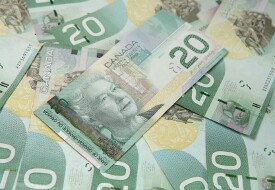Macroeconomic data released in Canada today was very good, but it did not prevent the Canadian dollar from falling. Risk aversion caused by trade wars and falling prices for crude oil, Canada’s major export, were responsible for the currency’s lackluster performance.
Canada’s gross domestic product rose 0.5% in March after falling 0.2% in April. That was a bit bigger increase than a 0.4% gain predicted by analysts. Gains were registered in 16 of 20 sectors.
The Industrial Product Price Index rose 0.8% in April, slightly exceeding the forecast of a 0.7% gain. The Raw Materials Price Index climbed 5.6%, much more than analysts had predicted — 2.3%. The gain was largely caused by rising crude oil prices.
Talking about crude, oil prices dropped more than 2% today after sinking more than 4% yesterday. As a result, the commodity was heading to the worst monthly performance in six months.
The news of a sudden trade war between the United States and Mexico shocked markets, sending riskier commodity-geared currencies down. The Canadian dollar was among them.
USD/CAD rose from 1.3498 to 1.3539 as of 13:47 GMT today, touching the high of 1.3564 intraday. EUR/CAD climbed from 1.5022 to 1.5103. CAD/JPY sank from 81.19 to 80.35, trading near the lowest level since January 4.
If you have any questions, comments, or opinions regarding the Canadian Dollar, feel free to post them using the commentary form below.
Risk Aversion, Falling Crude Oil Prices Overshadow Canada’s Data, CAD Drops
